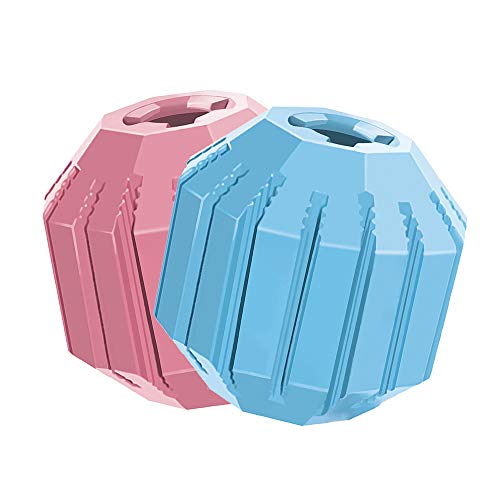| | Toy blocks, likewise called " foundation," are solid forms made use of for building and construction play.
Some are straightforward planks constructed from wood. Others are elegant, like the interlacing blocks of plastic made by Lego as well as MegaBlox.
However whatever form they take, blocks can operate as effective learning devices. Research studies recommend that toy blocks can aid children create
1. electric motor abilities as well as hand-eye coordination,
2. spatial reasoning,
3. cognitive versatility,
4. language skills,
5. a capacity for innovative, different reasoning,
6. social proficiency, and also
7. design abilities.
There is additionally evidence that complex block-play is linked with higher mathematical accomplishment.
Exactly how does it all take place? It's easy to see just how piling as well as organizing toy blocks can promote a toddler's motor advancement. But also for other skills, it's likely that kids require to do more than just move blocks around.
Research study recommends that youngsters benefit when construction play includes extra components, consisting of:
1. building from themes,
2. engaging in participating projects, as well as
3. speaking with others regarding spatial connections.
Here is an evaluation of the evidence, and also some pointers for enhancing block play.
1. Toy blocks advertise much better spatial thinking
We know there are links between spatial abilities and building play.
For instance, when Yvonne Caldera and her colleagues observed the construction tasks of 51 young children, they discovered a pattern:
The children that showed even more rate of interest in construction-- and also constructed extra advanced frameworks-- done much better on a standard examination of spatial intelligence (Caldera et al 1999).
The exact same pattern has actually been reported by others (Oostermeijer et alia 2014; Richardson et al 2014; Jirout and Newcombe 2015). However certainly we can not presume that block-play causes children to develop superior spatial abilities. Perhaps causation functions the other way. Children with advanced spatial skills might be much more inspired to play with toy obstructs!
That possibly discusses a few of the pattern. Yet there is also excellent reason to think that construction play has developing effects.
When scientists assigned kindergartners to participate in a program of assisted building play, these youngsters consequently exceeded their peers on tests of spatial visualization, block building, and "mental rotation"-- the ability to rotate as well as examine 3-D shapes in the "mind's eye" (Casey et al 2008).
As well as an extra current speculative research study checked the effects of organized block play-- the sort of play we engage in when we reproduce a structure from a model or blueprint.
After a team of 8-year-olds participated in simply 5, 30-minute sessions of structured block play, they showed improvements in psychological rotation.
In addition, brain scans exposed changes in the means their minds refined spatial info. Children in a control team did not exhibit these modifications (Newman et al 2016).
2. Structured block play may enhance cognitive flexibility
" Cognitive adaptability" is the capacity to swiftly move your emphasis from one appropriate stimulation to an additional. It's plainly important for success in school. But some kids battle with it, as well as certain environmental aspects-- like low socioeconomic standing-- put kids at higher threat for developing delays.
Can toy obstructs aid?
A current speculative research recommends they might.
Sara Schmitt and her associates arbitrarily assigned some youngsters to participate in daily sessions of structured block play.
In early sessions, the jobs were reasonably easy (e.g., " construct a tower"). Yet as kids ended up being more familiar with the products, they were offered extra requiring jobs (e.g., " replicate the framework you see in this picture").
The researchers didn't observe any significant adjustments with time. Yet by the end of study, the kids that 'd taken part in organized block play showed improvements in cognitive versatility, and also this was especially real for youngsters from households of reduced socioeconomic status (Schmitt et al 2018).
3. Toy blocks are related to language growth
Might youngsters likewise obtain a language increase from construction play? That appears feasible.
For instance, there is proof that very kids create much better language skills when they participate in routine block play.
In a research sponsored by Mega Bloks, researchers provided blocks to center- as well as low-income toddlers (Christakis et alia 2007). The youngsters varied in age from 1.5 to 2.5 years, as well as were arbitrarily appointed to obtain either therapies:
1. Youngsters in the treatment group obtained two sets of plaything Mega Bloks-- 80 plastic interlocking blocks and also a set of specialized blocks, including cars as well as people-- at the beginning of the research. The moms and dads of these toddlers were given instructions for motivating block play.
2. Kids in the control team did not get blocks until completion of the study. The parents of these kids received no guidelines about block play.
Parents in both groups were asked to maintain time journals of their kids's activities. Parents weren't informed the genuine objective of the research-- just that their children became part of a study of child time use.
After six months, each parent completed a follow-up interview that consisted of an assessment of the youngster's spoken capacity (the MacArthur-Bates Communicative Development Inventories).
The outcomes?
Youngsters in the team assigned to play with blocks
1. racked up higher on parent-reported examinations of vocabulary, grammar, and spoken comprehension, as well as
2. showed a non-significant fad in the direction of enjoying less TV
It's unclear why block play had this result. One possibility is that the children really did not truly differ nevertheless-- it was simply that moms and dads in the treatment team viewed better language competence in their kids. Motivating block play may have encouraged them to pay even more attention to their kids' growth.
But it's possible that parents in the treatment group spent more time talking with their kids, which might explain the language gains. Children learn to talk by participating in great deals of one-on-one conversations with other people.
There is also evidence that youngsters establish an enriched understanding of spatial vocabulary when we speak with them concerning spatial partnerships.
In one recent experiment, scientists advised mothers to make use of appropriate spatial language as they played with their 5-year-old youngsters, as well as the initiative made a distinction: Kids revealed to this spatial talk were most likely to make use of spatial language themselves (Boriello and also Liben 2018).
4. Toy obstructs may boost creative, divergent analytical
Psychologists acknowledge 2 major sorts of problem. Convergent problems have just one appropriate option. Divergent troubles can be solved in multiple methods.
Due to the fact that youngsters can assemble blocks in a selection of ways, obstruct play is different play. As well as divergent have fun with blocks may prepare kids to believe artistically and much better address divergent problems.
In one experiment, researchers provided young children with two types of play materials (Pepler as well as Ross 1981).
1. Some youngsters obtained materials for convergent play ( challenge pieces).
2. Other children were given materials for different play (chunky, block-like foam forms).
3. Youngsters were given time to play and after that were checked on their capacity to solve problems.
The outcomes? The children that played with blocks done much better on different troubles. They likewise showed more creativity in their efforts to address the troubles (Pepler and Ross 1981).
5. Cooperative building play assists children boost social abilities
Research study recommends that youngsters come to be friendlier and also a lot more socially-savvy when they work on participating building and construction projects.
For example, in research studies of kids with autism, youngsters who participated in play group sessions with plaything blocks made greater social enhancements than did children that were trained in the social use language (Owens et alia 2008; Legoff as well as Sherman 2006).
And study on normally-developing children recommends that youngsters that deal with participating tasks form higher-quality relationships (Roseth et al 2009). Visit Us Now. | | | |
|








